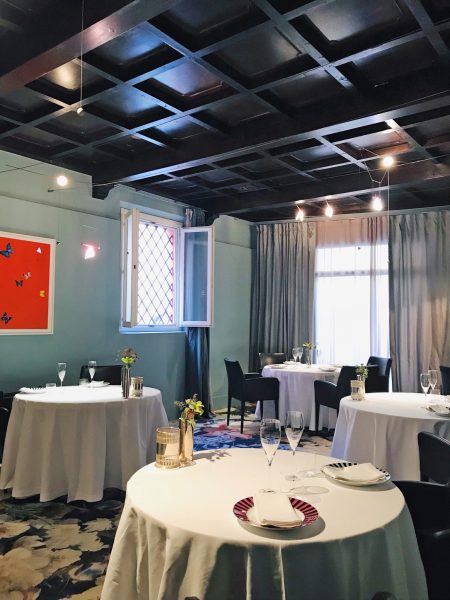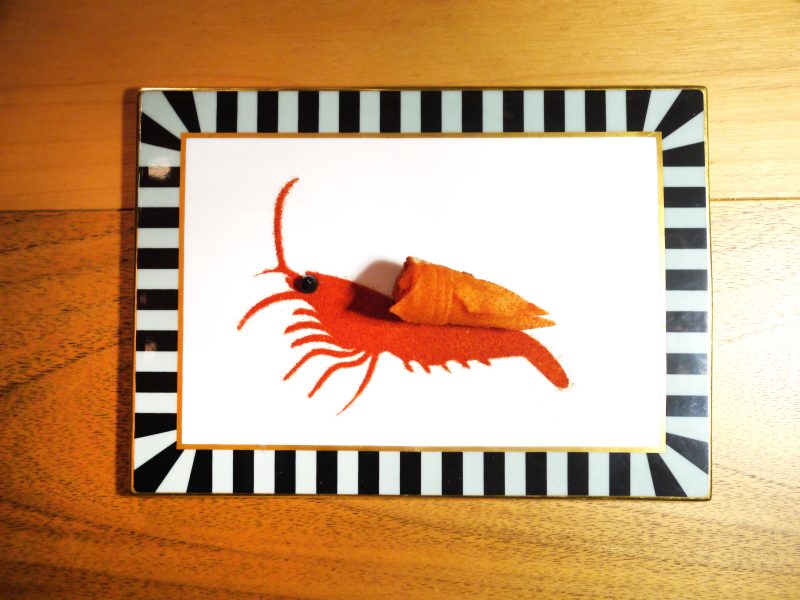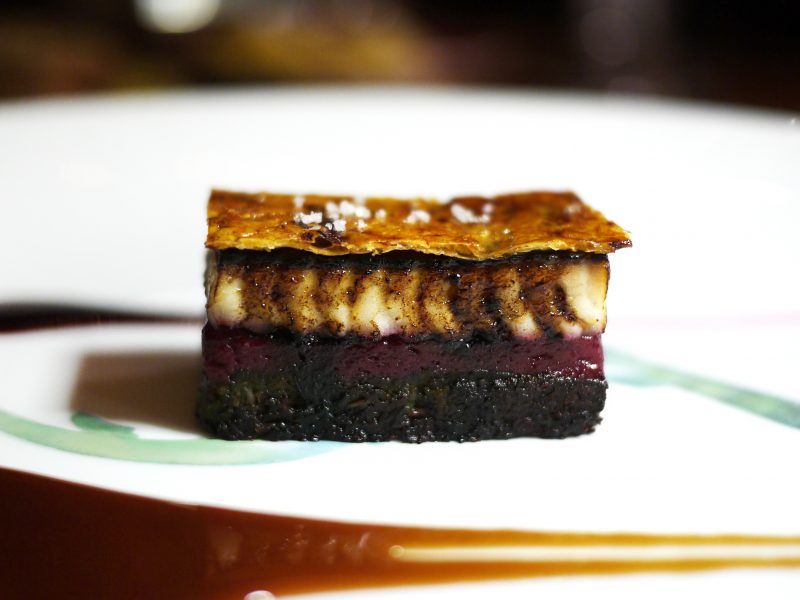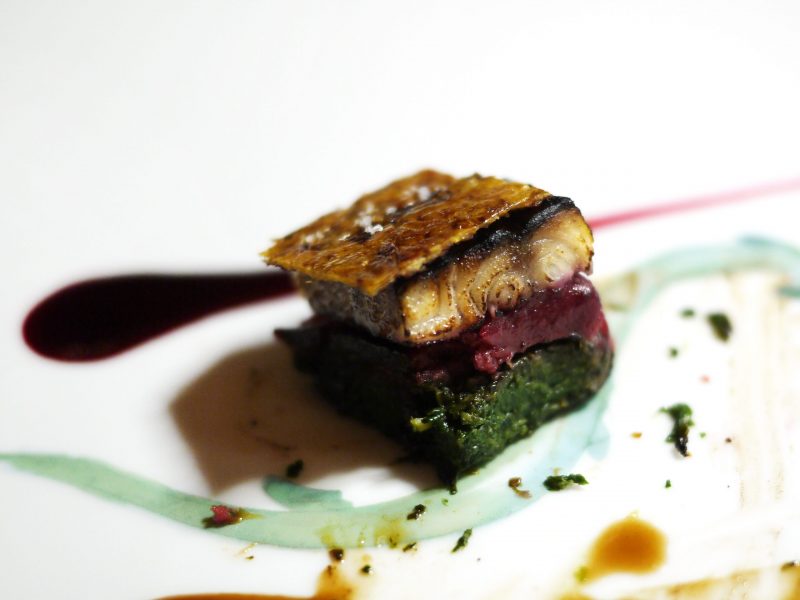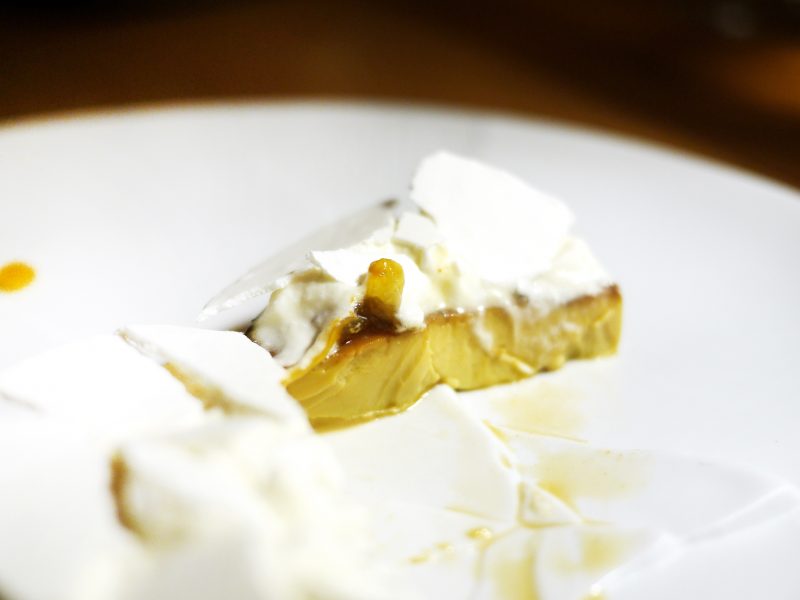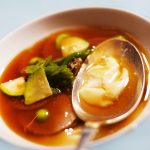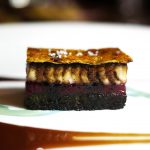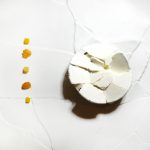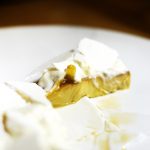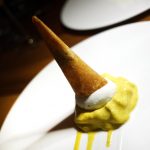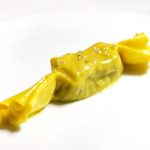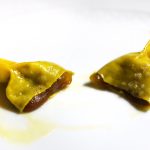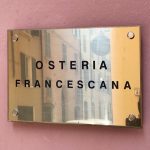Chef Massimo Bottura needs no introduction. Ranked #1 on World’s 50 Best, he has starred in the first episode of Netflix’s Chef’s Table, and is a Michelin 3-star chef; the list goes on and on. He has taken Italian cuisine to the 21st century – breaking all rules of its traditional form and combining his passion in cooking with his enthusiasm in contemporary art. As he mentions in Chef’s Table, it was a difficult journey to get to where he is now, to the point he was close to giving up the restaurant many times. Indeed, it took many years for people in Italy – in particular the small heritage city of Modena (where the restaurant is located) – to start accepting and appreciating Massimo’s innovative cuisine. I can confirm that this is not an exaggeration because in my first visit, which was a lunch in 2008, we were the only two diners for the whole service! Nowadays,their online reservation calendar opens for 6 months in advance and every single slot is competitive!
The creativity in his kitchen during that era was truly remarkable. His signature dishes were probably some of the most discussed and photographed in the last decade: “Fish market with abstract grill”, “Black monochrome”, “5-texture of 5 different ages of Parmigiano-Reggiano”, “Tortellini Walking into Broth”, “Burnt part of lasagne”, Foie gras “Magnum”. To this day, there are chefs who still replicate Massimo’s “Oops, I dropped my lemon tart!” wherein he served lemon tart on a “shattered” plate as if he really dropped it on the floor! It certainly feels as if almost every course served in the restaurant has found its way into culinary history; even the unconventional way he names each dish has become memorialised. However, things have changed now…
During the height of Covid, he had a complete rethink of his cuisine, and when the restaurant reopened post-lockdown, he got rid of almost all of his signature dishes. Now the only way to re-experience his original cuisine in full is at his other restaurant at Maria Luigia. In his main restaurant is a new, rebranded tasting menu “with a little help from my friends”. Massimo explains: “before, it was all about me, and now, it’s all about the past respectable Italian chefs that have influenced my cuisine”. True to his word, he has revisited and recreated signature dishes from top Italian chefs within the last 60 years.
My friend @little_meg_siu_meg and I got a special table located in the cellar. It was a beautiful setting surrounded by exclusive bottles. The menu outlined 12+ courses, paying tribute to all the chefs with names and years of creation for each famed course accredited. All in all it was a very enjoyable 4-hour experience, from which it is hard to pick any flaws. The precision of cooking, the use of ingredients, the cohesiveness of the flavours… Every dish was well-thought out and carefully executed. We savoured each item on the plate carefully and appreciated the detail put into them. Not that there was any low point to the meal, but I would say the experience was on par with how we expected it to be at this level of restaurant at first. However, to our surprise, when the main course arrived the whole experience shifted up a gear because the brain behind the menu – Massimo himself – arrived!
For the next 15 minutes, he took the spotlight from the food as he explained to us that initially the team created 100 concept dishes inspired by the signature dishes of many Italian chefs in recent decades and how he eliminated these down to what was on the final tasting menu. He elaborated on some courses in detail – “The Salvatore Tassa’s “Onion Dark” 1990 was supposed to be an onion, emptied, baked and filled with a puree of its pulp”, which Massimo reinterpreted into sheets of dough mixed with onion, rolled and toasted in the oven resulting in a Parmigiano-onion puff pastry. He highlighted that “This is to honour the onion, a poor food that has fed generations”. His explanation gave us a moment of reflection before he continued describing the other dishes we had on the menu.
Of course, Massimo being Massimo, simply replicating a recipe from another chef would be way too easy for him, so he had to give it his own twist. He went on to explain Gualtiero Marchesi’s iconic risotto – “this dish created in 1981 had only 3 simple components – rice, gold and saffron – but Marchesi was able to elevate what many would consider to be a simple rice dish into an icon of modern Italy cuisine. Truly amazing. And I wanted to save this historical dish for last, so I transformed this saviour dish into a sugar-free mini macaron served as a petit four! A saffron macaron filled with rice cream and decorated with gold leaf just like how Marchesi finished his saffron rice with a gold leaf square. When you eat it, the flavour profile is exactly the same but a sweet version instead.” I definitely connected with Massimo on this macaron since I was lucky enough to experience this Marchesi’s iconic dish back in 2010 when he was still alive.
I don’t want to let the storytelling overshadow the food itself, but Massimo’s appearance clearly lit up the whole restaurant. As I mentioned before, the food was enjoyable throughout, but he made the menu come alive! Reading the brief menu by itself won’t do it justice. I have to admit, the experience wouldn’t be the same without his personal narratives, especially with a menu full of history and many conceptual dishes.
Well. It was another wonderful experience at this restaurant. Looking forward to coming back in a few years time as I am sure Massimo will completely transform his menu once again.

